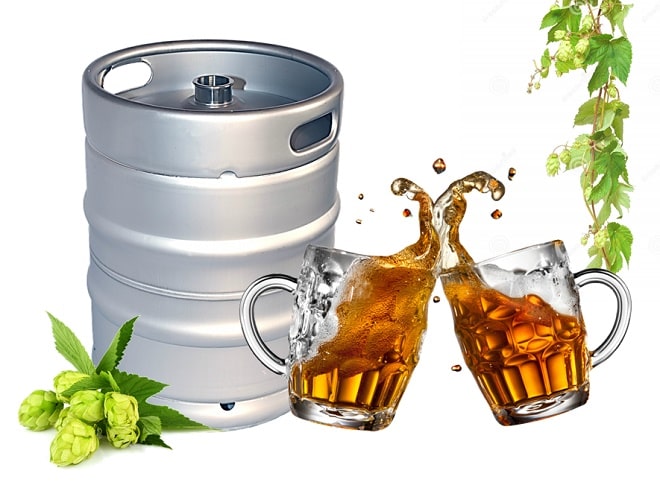Once the beer is brewed, the challenge for the brewer is to store the beer at home. This stage is no less important than the observance of technological processes during the actual cooking, since the discrepancy between the conditions can cancel out all the work.
⠀

⠀
⠀How long does homemade beer last? From a few days to several months - as long as you and your family have enough patience. It's humorous, but seriously, it doesn't matter how long you plan to store unfiltered homebrew beer. If you choose the right container, the period can be calculated in months. The main requirements for containers are tightness and sterility of containers. The live microflora of the drink, when interacting with air molecules, as well as spores of wild yeast, lactic bacteria that are present in the atmosphere, will change the taste, color and aroma of the foam. It will fall into disrepair.
⠀
This container is popular and recommended for saving a foamy drink. How long does homemade beer last in PET? For a long time. Although not as much as in a glass sterile container. Polyethylene terephthalate is a type of inert plastic that does not enter into chemical reactions with the contents. It is durable, so it is ideal for storing active carbonated drinks. PET bottles are also cheap, available in a range of sizes, and can serve as an indicator of the fermentation process.
⠀
This is a popular practice when brewed beer is sent to bottle aging - bottle-condition. Inside the container, yeast cultures interact with sugar, which is introduced at this stage. Storing beer is accompanied by the release of carbon dioxide. A flexible plastic bottle hardens due to excess pressure. And the brewer can determine the degree of saturation of the drink with gases by the state of the container.
⠀
The disadvantages of PET containers include low barrier properties. Under high pressure, plastic can let small amounts of carbon dioxide out and oxygen in. For those who are looking for an answer to the question: “How to store unfiltered beer?”, It will be important to know that PET is suitable for a short aging of the drink. But strong varieties that require long aging are best poured into glass.
⠀
How long does homemade beer last in glass bottles? Much longer than in PET. Glass bottles are the standard in home brewing. This container is perfect in every way. It is durable and withstands internal pressure. If certain sanitation requirements are met, it can be reused. Glass looks more attractive than plastic. Therefore, serving beer to guests will be more spectacular. A glass bottle with an airtight stopper will not let carbon dioxide out and oxygen in.
⠀
There are some drawbacks to glass containers. This is significant weight. A box with "glass" is difficult to lift for loading, move alone. Glass also transmits ultraviolet rays, which can harm the contents.
⠀
Today, keeping beer in kegs is popular among homebrewers. There are several reasons for this. Fermentation of hops in a bottle is accompanied by turbidity of the drink as a result of the activity of yeast cultures. Transparency is lost, and sometimes the taste of foamy. Therefore, brewers are concerned about reducing the amount of yeast or completely neutralizing it. But if there is no fermentation, extraneous microbes will develop in the drink, which will shorten the shelf life of the beer. The problem can be solved by fermentation and storage of beer in kegs.
⠀
The large size of the keg ensures that the yeast sediment settles to the bottom - it does not fall into the glass. Thus, it is possible to obtain the transparency of the drink.
⠀
Kegs are made of durable plastic or stainless steel, so carbon dioxide and oxygen do not pass through their walls. And opaque materials do not transmit ultraviolet light. Durable beer kegs withstand significant internal pressure, so bottle-coditioned processes run smoothly. And the different capacity of such containers - from 5 to 30 liters - allows you to choose the size based on specific needs. The bottling of the drink is carried out by means of a manual pump.
⠀

⠀
The disadvantage of kegs is that it is problematic to store beer in open containers. The drink will need to be consumed in 2-3 days, otherwise it will disappear.
⠀
We have told you how to store unfiltered beer in different containers. How long will homemade beer keep? Directly depends on the choice of container. You can use several types of bottles at once in order to determine the best option for yourself in a practical way.